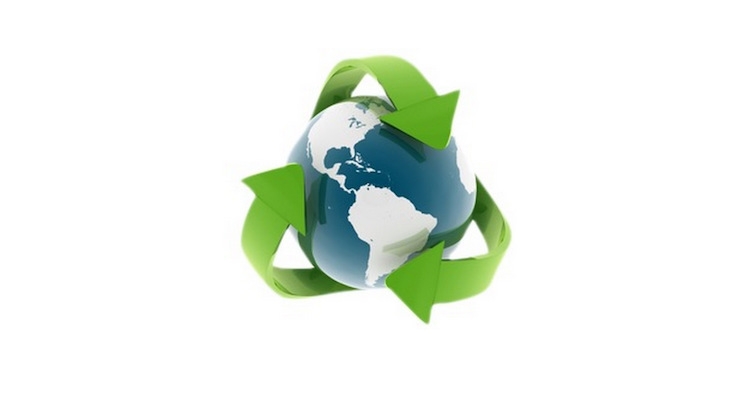Nick Vaus06.05.17
Conversations about sustainability in the beauty industry are sometimes like the policy pronouncements from Trump’s White House administration: the detail is distinctly vague. The UN definition of sustainability is “meeting the needs of the present without compromising the ability of future generations to meet their own needs”. Essentially it’s about maximising economic growth and poverty reduction, but minimising environmental and social impacts on people and the planet.
If doing business better is the aim of the game, then what we’re currently doing to achieve sustainability in beauty requires a total rethink.
Why do I say that? Because so much thinking around sustainability is focused on the sharp end of beauty packaging at the moment. And that downstream approach simply isn’t capable of achieving the root and branch change necessary to make the industry sustainable.
This focus is completely understandable: packaging is the most visible and physical manifestation of a beauty brand, and it ties into an extremely vocal environmentalist agenda of water and land pollution. Nothing makes people care more than the image of a cute baby animal being choked by a piece of plastic packaging. We can literally see the ugly impact of our beauty consumption.
While surveys consistently show recycling and packaging at the top of global consumer concerns, a shift to the much wider definition is emerging. And it’s not clear that anyone is really grappling with this reality, apart from the big guns of Unilever, Estee Lauder and the like. Research from Pew, Forbes, and Nielsen shows how Millennials and younger consumers want visible and holistic sustainability: how employees are treated, what products are made from, what causes brands support and more.
The only way to really meet this new consumer demand is by flipping where and when the questions about sustainability get asked in the whole life-cycle of any beauty brand or product. Anything that smacks of a mere bolt-on or greenwash will simply not make the grade with these ‘activist’ consumers. If the right questions are asked, at the right time, then sustainability can be woven into a brand’s very purpose at the very outset of brand creation or rejuvenation.
Asking what your brand wants to be known for and what makes it different explicitly with sustainability in mind offers answers to truly meaningful brand activation. It’s potentially harder and more expensive to do it, but more fruitful over the longer term.
Of course, the packaging piece is still vital. It’s the expression of the brand purpose brought to life. From the colours and finishes used in the visual identity to the packaging formats chosen for refillability, minimisation and recyclability. But if the brand purpose includes striving to do business better, it can help drive everything. NPD and innovation, internal and external diversity of all stripes, campaigns, where to produce and invest: the list is endless. And it offers a far more beautiful future for both the industry and humankind.
ABOUT THE AUTHOR
If doing business better is the aim of the game, then what we’re currently doing to achieve sustainability in beauty requires a total rethink.
Why do I say that? Because so much thinking around sustainability is focused on the sharp end of beauty packaging at the moment. And that downstream approach simply isn’t capable of achieving the root and branch change necessary to make the industry sustainable.
This focus is completely understandable: packaging is the most visible and physical manifestation of a beauty brand, and it ties into an extremely vocal environmentalist agenda of water and land pollution. Nothing makes people care more than the image of a cute baby animal being choked by a piece of plastic packaging. We can literally see the ugly impact of our beauty consumption.
While surveys consistently show recycling and packaging at the top of global consumer concerns, a shift to the much wider definition is emerging. And it’s not clear that anyone is really grappling with this reality, apart from the big guns of Unilever, Estee Lauder and the like. Research from Pew, Forbes, and Nielsen shows how Millennials and younger consumers want visible and holistic sustainability: how employees are treated, what products are made from, what causes brands support and more.
The only way to really meet this new consumer demand is by flipping where and when the questions about sustainability get asked in the whole life-cycle of any beauty brand or product. Anything that smacks of a mere bolt-on or greenwash will simply not make the grade with these ‘activist’ consumers. If the right questions are asked, at the right time, then sustainability can be woven into a brand’s very purpose at the very outset of brand creation or rejuvenation.
Asking what your brand wants to be known for and what makes it different explicitly with sustainability in mind offers answers to truly meaningful brand activation. It’s potentially harder and more expensive to do it, but more fruitful over the longer term.
Of course, the packaging piece is still vital. It’s the expression of the brand purpose brought to life. From the colours and finishes used in the visual identity to the packaging formats chosen for refillability, minimisation and recyclability. But if the brand purpose includes striving to do business better, it can help drive everything. NPD and innovation, internal and external diversity of all stripes, campaigns, where to produce and invest: the list is endless. And it offers a far more beautiful future for both the industry and humankind.




























